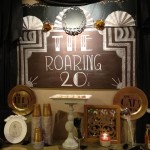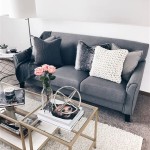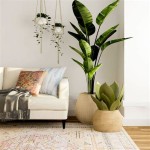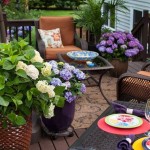How to Decorate in Vintage Style
Vintage style, with its charm and nostalgia, offers a timeless aesthetic for interior design. It evokes a sense of history, warmth, and individuality, often incorporating pieces from various eras to create a unique and inviting atmosphere. Achieving a successful vintage look requires careful planning and attention to detail. This approach goes beyond simply acquiring old furniture; it involves understanding the principles of design, curating a collection of authentic or vintage-inspired items, and thoughtfully arranging them to create a cohesive and visually appealing space. The following points offer a comprehensive guide to decorating in the vintage style.
Understanding the Core Principles
Before embarking on a vintage-inspired decorating project, comprehending its underlying principles is crucial. The style is rooted in a specific period, often spanning from the early 20th century to the 1980s. Common periods that influence vintage design include Art Deco (1920s-1930s), Mid-Century Modern (1940s-1960s), and Shabby Chic (1980s). However, a successful vintage aesthetic is not constrained by a single era. Instead, it draws inspiration from diverse periods, carefully blending elements to achieve a harmonious design. Furthermore, consider the specific eras that captivate personal preferences. This will provide a guiding framework for sourcing items, selecting color palettes, and choosing appropriate accessories. The ultimate goal is to create a space that feels authentic and reflects the unique character of the inhabitants.
The core tenets of vintage decor often emphasize warmth and comfort. Soft, natural lighting is preferred over harsh, modern illumination. Textiles play a significant role, offering visual texture and tactile appeal. This includes layering rugs, incorporating plush throws, and using curtains or drapes to soften the room. Vintage also embraces imperfection and character. Worn finishes, slightly faded colors, and items with a history are all considered desirable. The focus is on creating a lived-in, inviting space rather than a pristine, showroom-like environment. Finally, it is essential to practice restraint. While the goal is to incorporate vintage elements, avoid overcrowding the space. Strategic placement of key pieces, combined with a curated selection of accessories, will create a more impactful and appealing design.
Choosing the Right Color Palette
Color selection is a fundamental aspect of vintage design. The color palette significantly impacts the atmosphere and overall aesthetic. Consider the era or periods that resonate with the design aesthetic. Pastels, such as soft blues, greens, and pinks, were popular throughout the mid-twentieth century. Earth tones, including warm browns, creams, and olive greens, were central to many eras. The choice of colours can also evoke a specific ambiance: a brighter, bolder palette might be more suited to an Art Deco-inspired space, while more subdued tones might be fitting for a Shabby Chic setting. Remember that vintage interiors often feature colours that have faded or softened with age. Avoid overly bright or saturated hues that might clash with the intended aesthetic. Instead, opt for colours with muted tones or vintage-inspired shades.
Wall colors are an important consideration, often setting the foundation for the entire room. Consider neutral walls to showcase vintage furniture and accessories. Cream, beige, or light grey provide a versatile backdrop, allowing the curated collection to take center stage. Alternatively, choose a colour that is inspired by a particular era. Wallpaper can also be a significant element in vintage design. Look for wallpapers with floral patterns, geometric designs, or damask motifs. These can add visual interest and textural contrast to the space, providing a focal point in a room or helping to define a particular area.
Sourcing Authentic and Vintage-Inspired Pieces
Acquiring the right furniture and accessories is essential to creating a vintage look. Source authentic vintage pieces from various sources, including antique stores, flea markets, estate sales, and online marketplaces. These items possess inherent character and history, adding a sense of authenticity to the space. When seeking out vintage furniture, pay attention to the materials and construction. Pieces made from solid wood, with dovetailed joints and quality craftsmanship, are typically more durable and desirable than those made from newer, less substantial materials. Inspect furniture for any damage or potential restoration needs. Minor imperfections can often be considered desirable, adding to the charm of the piece.
If finding original vintage pieces is challenging or if specific aesthetics are desired, explore vintage-inspired options. Many retailers offer furniture and decor that emulate the look and feel of vintage items, often at more accessible price points. These pieces can be designed with new materials or they may be a close replica of vintage pieces. Consider pieces such as tufted sofas, upholstered armchairs, and wooden side tables. Accessories are critical to completing the vintage aesthetic. These include vintage lamps, mirrors, artwork, and decorative objects. Look for items that reflect the chosen period or evoke a sense of nostalgia. Incorporate antique books, vintage photographs, or decorative trays to add personality and visual interest. Textiles are an important consideration. Include antique quilts, embroidered cushions, and patterned rugs to soften the space and create a comfortable atmosphere. These textiles add layers of color, texture, and pattern that enrich the overall design.
Arranging Furniture and Creating Focal Points
The arrangement of furniture significantly impacts the flow and functionality of a vintage-style room. Consider the room's layout and how the space will be used. Create conversational groupings by placing seating around a focal point such as a fireplace or a large window. Arrange furniture to encourage interaction and create distinct zones within the space. Balance is a key consideration. Distribute pieces evenly throughout the room. Use furniture to balance the visual weight and create a sense of harmony. Do not overcrowd the space. Allow for movement and breathing room. This prevents the space from feeling cluttered and allows each piece to stand out.
A focal point is a key element in any well-designed room. In vintage-style decor, this can be a fireplace, an ornate mirror, a statement piece of furniture, or a collection of artwork. Direct visual attention toward the intended focal point. Arrange furniture and accessories to highlight its importance. Ensure furniture and objects are proportioned correctly, paying close attention to scale and the overall balance of the space. Incorporate a mix of textures and materials to create visual interest. Combining wood furniture, upholstered pieces, and metal accents will add depth and complexity. Ensure the lighting supports the aesthetic. Layer ambient, task, and accent lighting to create a warm and inviting atmosphere. Use vintage-style lamps, chandeliers, or sconces to complement the decor.
Adding the Finishing Touches
The final details are critical to completing the vintage aesthetic. Consider how to add personal touches, such as selecting items that reflect personal interests. Display family heirlooms, antique photographs, and vintage collectibles to imbue the room with personality and a sense of history. Introduce natural elements. Incorporating plants and flowers adds freshness and life to the space. Use vintage-style vases and planters to complement the decor and enhance the visual appeal. Pay attention to the window treatments. Sheer curtains or drapes can soften the light and provide a touch of elegance. Consider using vintage-inspired hardware for the curtains. Maintain a consistent theme throughout the space. Ensure the furniture and decor pieces complement each other and reflect the chosen vintage aesthetic.
Layering items is a critical aspect to achieving a complete, comfortable, and inviting vintage look. This can involve adding rugs of different textures, layering textiles on sofas and chairs, displaying collections of objects on shelves, and incorporating various lighting sources. These additional layers add depth, texture, and character to the space. By following these guidelines, it is possible to create a beautiful and timeless vintage-style interior that reflects a sophisticated sense of design that the inhabitants can appreciate.

21 Antique Vintage Home Decor Ideas Extra Space Storage

How To Decorate With Antiques And Vintage Pieces

Vintage Interior Design Style S Objects And Details In Brief

How To Decorate Your Home With Antiques And Vintage Finds

Vintage Decor 20 Retro Designs To Revisit Bob Vila

Decorating With Vintage Rugs 8 Design Inspirations Ruggable Blog

10 Vintage Bedroom Ideas That Are Timeless Swyft

How To Decorate W Vintage Kitchen Decor Rolling Pins Utensils

Glamor Of Vintage Furniture How To Capture Classic Style
:max_bytes(150000):strip_icc()/final-w.-large-mirror-bb2c331d25e743968d5ec1fd926adf55.jpg?strip=all)
25 Vintage Bedrooms That Prove Decor S Worth
Related Posts







